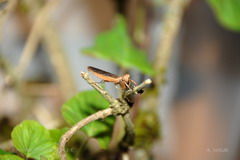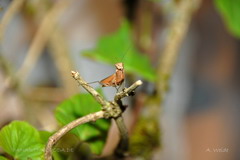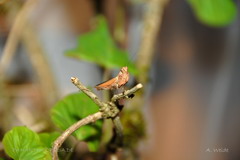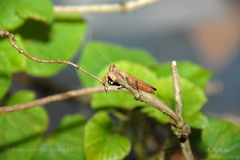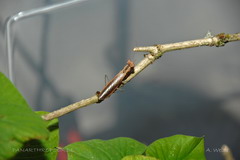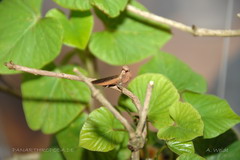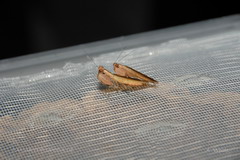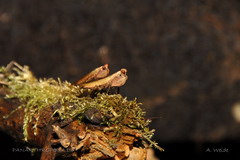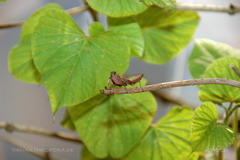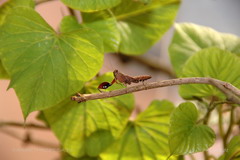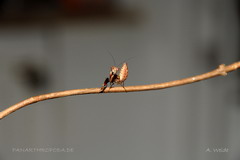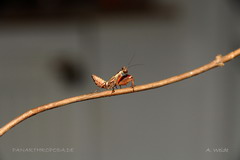- Acanthopidae
- Amorphoscelidae
- Empusidae
- Eremiaphilidae
- Hymenopodidae
- Iridopterygidae
- Liturgusidae
- Mantidae
- Metallyticidae
- Sibyllidae
- Tarachodidae
- Thespidae
- Toxoderidae

Ephestiasula pictipes (Wood-Mason, 1879)
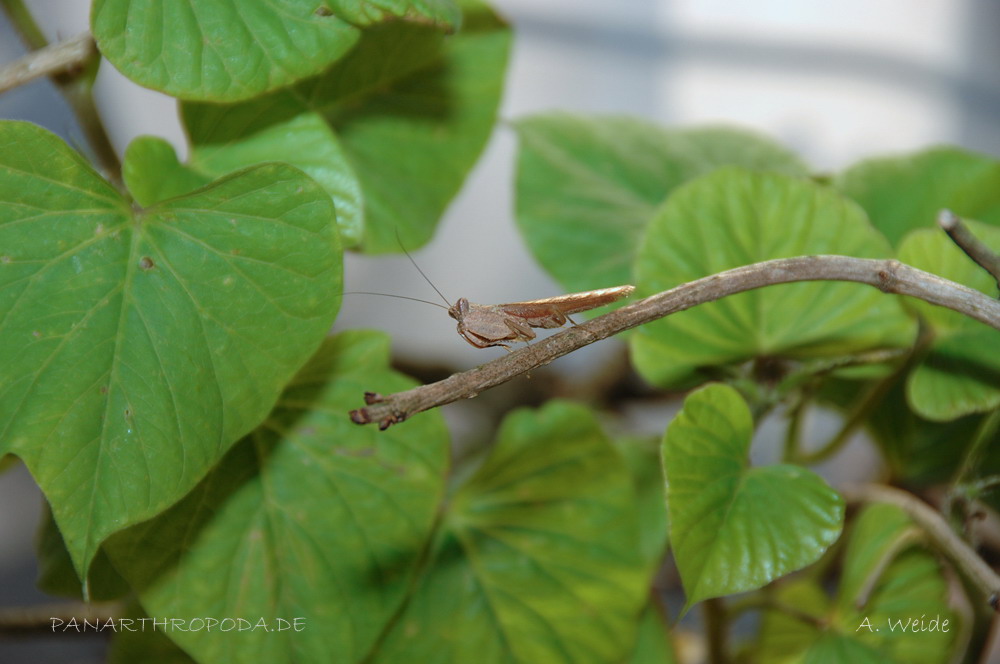
Adult male
Origin and occurrence
Ephestiasula pictipes has been found in India and Nepal. My specimen originated from the indian state Goa (IGM-Nr. 93).
Appearance and sexual dimorphism
The animals almost totally comply with the „generel type“ of mantids. Noticeable morphological peculiarities are the severely upsized femura, of which the insides are colored aposematically. The rest of the habitus of Ephestiasula pictipes is colored gray to brown. The color of the wings varies from a sap green to brown.
This species can be sexed by the size of the specimen, since females will grow to up to 2,5 cm and get bulkier as the smaller males (up to 2 cm). The larvae can be sexed by counting the abdominal segments, of which females have 6 and males 8.
Behavior
Ephestiasula pictipes is a rather active species of mantid, at least when it comes to the larvae. The adults are considerably more inactive. This species is only fit for keeping in groups under limitations. Casualties due to cannibalism can be minimized with a generous offering of space and food, but not be totally avoided. Keeping them seperately should therefore be preferred.
Characteristic for Ephestiasula pictipes is the alternating stretching of the raptorial legs, which combined with the upsized femura gave it the name "boxer mantid". When two individuals meet a sort of beckoning using those legs can be observed, which seemes to serve as a form of communication and to avoid fighting. Most of the time the specimen will flee quickly after meeting. The enlarged and colorful raptorial legs are used for threatening, too.
I can not make any comments about their capability of flight, since I could never observe any attemps to do so.
Keeping conditions
Corrosponding to their habitat, temperatures of 25 to 30°C during day and about 20°C during night should be reached. The humidity needn't be high, spraying every 2 to 3 days is sufficient. The container should contain slender twigs, possibly with leafs. No substrat is needed, paper towel is fine, but humus or something similar can be used, too.
As mentioned above, keeping them seperately is safer, a container of about 10x10x15 is enough to house one specimen. When kept in groups one should offer much more space to make sure the animals can avoid each other. Therefore one should not put more then 5 specimen in a container measuring 20x20x30.
They can be fed with flies, moths and firebrats - all fitted to their own size.
Mating and raising the young
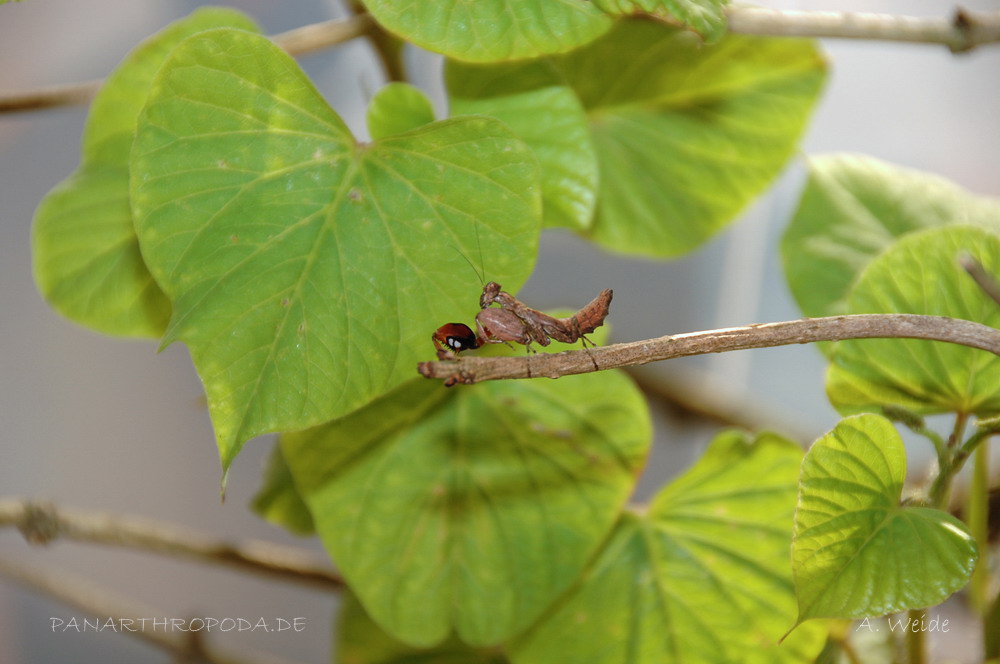
Subadult female
Mating Ephestiasula pictipes is no problem. They will be sexually mature and ready for mating.
The oothecae should be yielded at 30 °C during day and 20 °C during night. 4 to 5 weeks later the young (between 25 and 30 of them) hatch. Due to their small size, they have to be fed with Drosophila melanogaster. After one or two molts they will prey on D. hydei and later on even on houseflies, green bottle flies and firebrats.
During the developement of the larvae black morphes can appear, that are again colored usually when reaching adulthood. The larvae develope without a problem under the above mentioned conditions and will reach adulthood after about 3 months when fed properly.
Diagnosis
Ephestiasula pictipes is rather easy to keep and breed. Keeping several specimen in seperate containers uses up some space, though. When one has a large enough stock and keeps them in groups, they will reproduce almost without any assistance.
A. Weide

